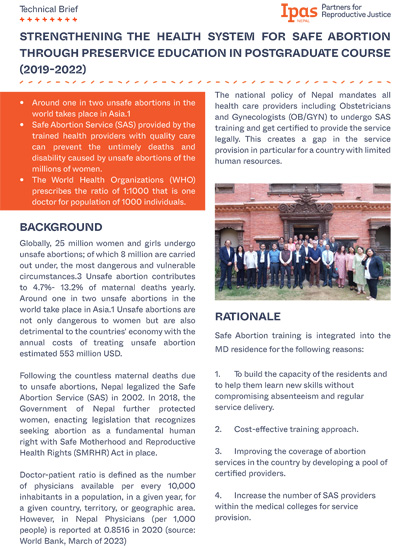 BACKGROUND
BACKGROUND
Globally, 25 million women and girls undergo unsafe abortions; of which 8 million are carried out under, the most dangerous and vulnerable circumstances.3 Unsafe abortion contributes to 4.7%- 13.2% of maternal deaths yearly. Around one in two unsafe abortions in the world take place in Asia.1 Unsafe abortions are not only dangerous to women but are also detrimental to the countries’ economy with the annual costs of treating unsafe abortion estimated 553 million USD.
Following the countless maternal deaths due to unsafe abortions, Nepal legalized the Safe Abortion Service (SAS) in 2002. In 2018, the Government of Nepal further protected women, enacting legislation that recognizes seeking abortion as a fundamental human right with Safe Motherhood and Reproductive Health Rights (SMRHR) Act in place.
Doctor-patient ratio is defined as the number of physicians available per every 10,000 inhabitants in a population, in a given year, for a given country, territory, or geographic area. However, in Nepal Physicians (per 1,000 people) is reported at 0.8516 in 2020 (source: World Bank, March of 2023)
The national policy of Nepal mandates all health care providers including Obstetricians and Gynecologists (OB/GYN) to undergo SAS training and get certified to provide the service legally. This creates a gap in the service provision in particular for a country with limited human resources.

